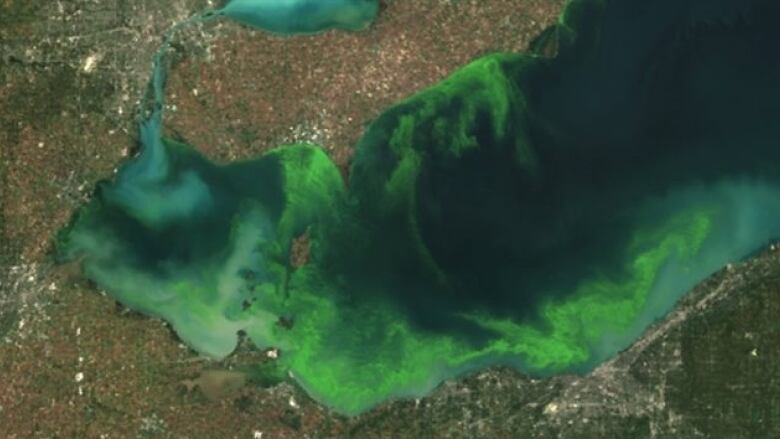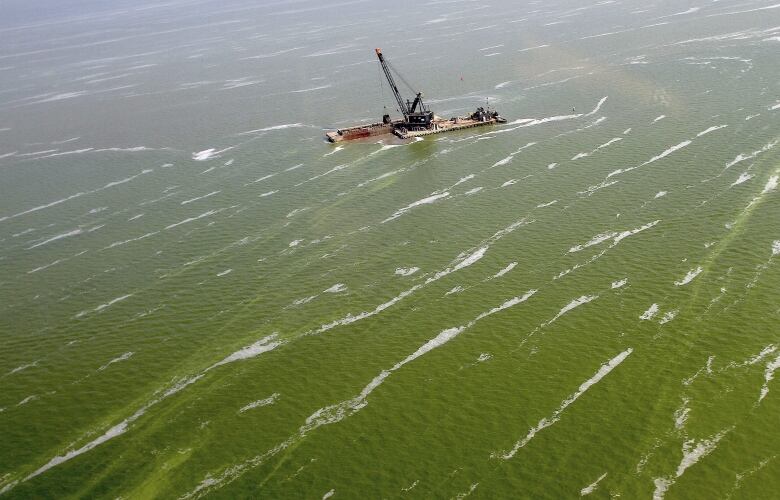Ohio moves forward with plans to monitor algae blooms on Lake Erie
Ontario, Michigan and Ohio signed a deal to make a 40 per cent reduction in runoff over the next decade

Ohio's blueprint for combating the algae in Lake Erie that has become a threat to drinking water calls for targeting specific watersheds and developing a monitoring network within the next year.
The strategy first released last May and finalized just this past week outlines how Ohio plans to reach its goal of sharply cutting the phosphorus runoff feeding the algae.
The algae blooms in recent years have contaminated drinking water supplies, turned the waters an unsightly shade of green and contributed to oxygen-deprived dead zones where fish can't survive.
Ontario, Michigan and Ohio signed a deal in 2015 to make a 40 per cent reduction over the next decade.
While it's a multi-year plan that's designed to be adjusted if some solutions work better than others, it does lay out several steps for state agencies to take within the next year:
Top targets
The state's Environmental Protection Agency will look at identifying priority watersheds that are prone to runoff around the lake's western end where it can make the biggest impact reducing the flow of phosphorus.
The plan says focusing on these areas will help the state see reductions more quickly, but it doesn't mean that work to improve water quality in other areas should be neglected.

More monitoring
Within the next 12 months, the state EPA will create a water quality monitoring network that tracks how much progress is being made toward reaching the 40 per cent reduction.
It also will work with surrounding states and Ontario to make sure the same sampling and lab methods are being used and that there's a consistent method of collecting and reporting information. Increased monitoring will allow the overall plan to evolve over the next decade so that what's being done is most effective, EPA leaders say.
Wastewater plants
While scientists say fertilizers and livestock manure from farms are the main sources of the phosphorus problem, sewage from treatment plants and leaking septic tanks play a role, too.
The state EPA will begin trying to find ways to reduce how much phosphorus is released into rivers and streams by small wastewater plants that don't have a permit limit for those discharges.

Farmers' role
Ohio's plan relies on convincing farmers to make changes to practices they've used for years, such as no longer spreading manure on soaked fields and encouraging them to use the right amount of fertilizer. But some environmental groups and researchers contend more needs to be done to make a big dent in the phosphorus runoff












_(720p).jpg)


 OFFICIAL HD MUSIC VIDEO.jpg)
.jpg)



























































































